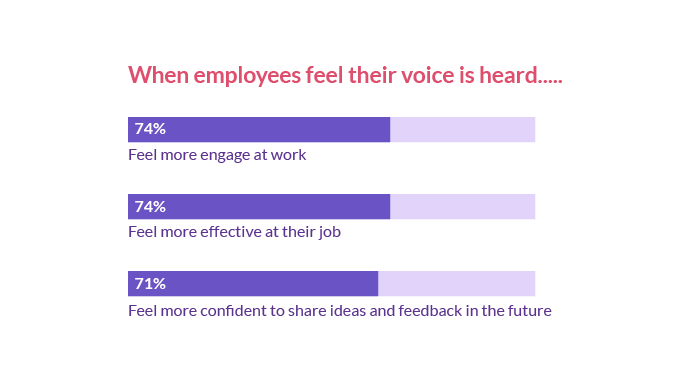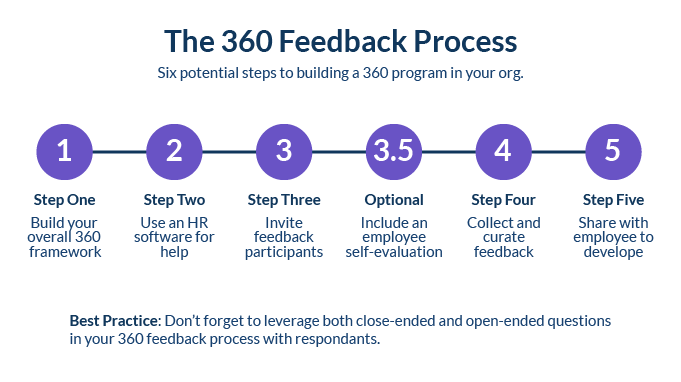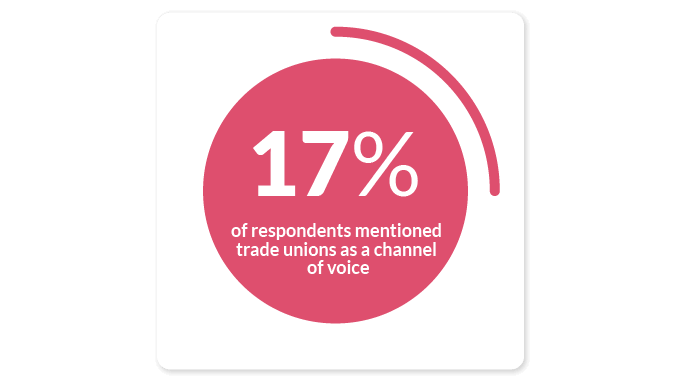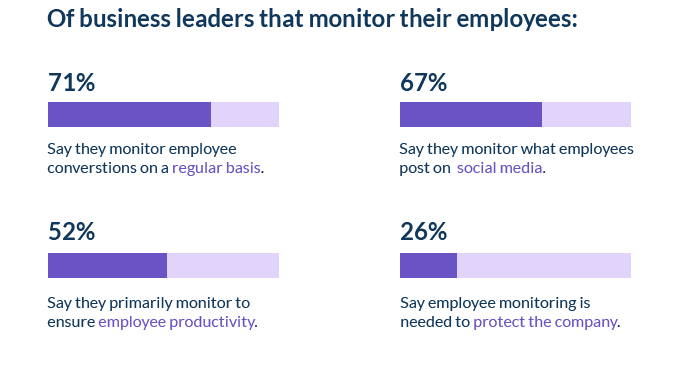Employee Listening Strategy: 10 Great Ways To Build One
In today's fast-paced and ever-evolving workplace, fostering open and meaningful communication with employees is vital for the success of any organization.
Implementing an effective employee listening strategy is crucial to creating a positive and productive work environment. However, it is not an easy task to overcome the barriers that prevent employees from feeling heard and valued in the decision-making process.
The sad truth is that many employees feel their voices don't matter, that their feedback falls on deaf ears, and that they do not influence the direction of their organization. And this isn't just bad for employees - it's bad for business.
That's where effective employee listening comes in.
By actively seeking and understanding the feedback and opinions of your employees, you can create a workplace culture that fosters engagement, innovation, and success.
In this blog post, we will delve into the importance of an employee listening strategy and explore ten actionable ways to build one.
It will empower HR professionals, team leaders, and business owners to create an atmosphere where employees feel heard, valued, and motivated to contribute their best.
But before we start, let us understand the meaning of employee listening strategy and how you can benefit from it.
What is Employee Listening Strategy?
An employee listening strategy is an organization's plan or framework to listen to and act on employee feedback effectively.
It involves creating channels for employee feedback, analyzing and interpreting feedback data.
The strategy's focus is to implement changes that improve employee engagement, productivity, and well-being.
Now that we've grasped the concept, let's examine the "why" part of implementing an employee listening strategy.
Benefits of Employee Listening Strategy
When employees feel like their opinions matter, they are more likely to be invested in their work, take ownership of their responsibilities, and work collaboratively with their colleagues.
- Employee listening is not just a feel-good exercise; it is a continuous process between a manager and team members during their entire employee lifecycle.
- Continuous employee listening can drive real results for your business, including increased productivity, improved employee retention, and higher customer satisfaction.
- Leaders get an undiluted and unbiased view of the company's areas to improve.
- Helps creating a culture of trust and transparency, and foster an engaged and committed workforce.
- Helps organizations identify and address issues before they escalate into bigger problems.
- By listening to employee feedback, employers can gain valuable insights into areas where improvement is required and take action to create a better work culture.
10 Effective Employee Listening Strategies
Effective employee listening strategies not only give employees a voice but also give organizations a competitive edge by unlocking the potential of their most valuable asset - their people.
Although many of us do have an idea of what listening strategies include, they are much more than just employee surveys. Sometimes what we think might work for our team may not be suitable for them, and at such, having a strategy in place always helps.
With that thought, let us focus on the 10 most effective employee listening strategies that you can implement in your organization and see the magic happen.
After all, if you don't listen to your employees, how can you expect them to listen to you?
1. Aligning People and Business Strategy
A study says 74% of employees are more effective in their work when they feel heard, with 71% feeling sufficiently confident to share their feedback and ideas in the future.
Aligning people and business strategy refers to the process of ensuring that an organization's people-listening efforts are aligned with its broader business goals and objectives.
This involves collecting and analyzing feedback from employees, customers, and other stakeholders in a way that supports the organization's strategic priorities.
Doing so creates a synergy between two critical areas- new opportunities for growth and success and building a more resilient and adaptable business.
So, how do we implement this strategy?
- Carefully review your business goals. By doing so, you can ensure that the feedback and data you gather through employee listening efforts are relevant and actionable.
- This action will facilitate progress toward achieving your strategic objectives.
- By leveraging these insights to make meaningful improvements, you can drive your organization toward greater success grounded by an engaged and motivated workforce.
2. Hold Town-hall Meetings
Conducting regular company-wide meetings where employees can ask questions, express their opinions, and receive updates on important matters.
Town Hall Meetings refer to a type of gathering or assembly in an organization where a large number of employees come together to participate in an open forum-style discussion.
These meetings are typically led by senior leaders, executives, or management and serve as a platform for employees to ask questions, share their opinions, and receive updates on important matters that affect the entire organization.
So how do we go about it?
- Plan and prepare an agenda: Determine the meeting's purpose and outline the topics to be discussed.
- Communicate in advance: Inform employees about the meeting details, allowing them to prepare and participate.
- Facilitate open dialogue: Create an environment that encourages employees to share their thoughts and concerns.
- Use visual aids: Utilize visuals to enhance communication and help convey key messages effectively.
- Moderate and manage time: Ensure a smooth flow of the meeting and allocate sufficient time for each topic.
- Encourage participation: Actively involve employees by inviting questions, opinions, and suggestions.
- Provide transparent responses: Respond honestly and openly to employee inquiries, addressing their concerns.
- Follow up with a summary: Share a brief overview of the meeting's discussion and any actionable steps.
- Collect feedback for improvement: Seek input from employees to enhance future town hall meetings.
3. Skip-Level Meetings are a Must
Skip-level meetings provide an excellent opportunity to improve your active listening skills.
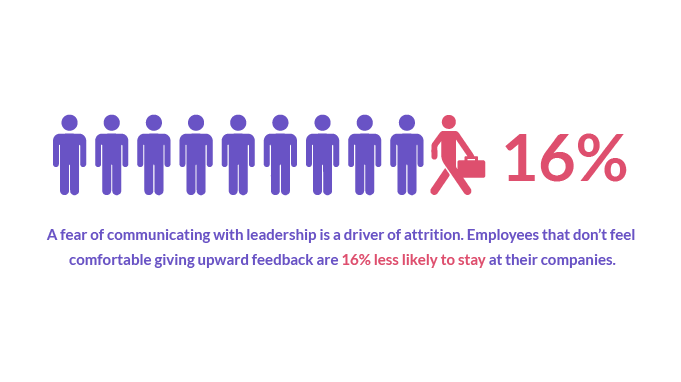
Source Credit
Skip level meetings allow you to engage with people in your organization who do not directly report to you.
These meetings are particularly useful for senior-level leaders or key decision-makers with large teams.
What does Skip level meeting mean?
A skip-level meeting is a meeting where a manager's superior or higher-level manager directly engages with employees, bypassing the manager in question.
In this meeting, the higher-level manager interacts directly with the employees, fostering open communication and gathering insights without the presence of their immediate supervisor.
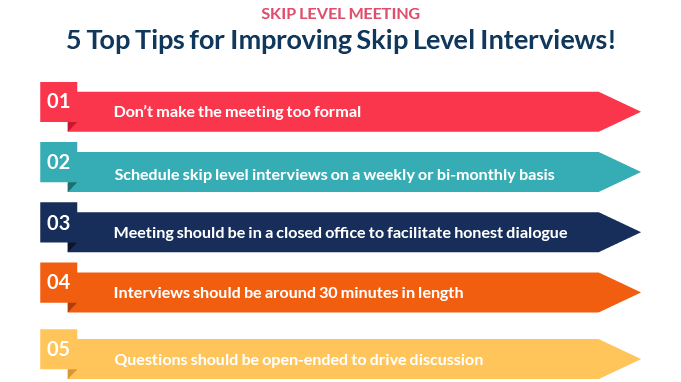
-
By conducting skip-level meetings, you can gain valuable insights into the organization's operations, identify areas for improvement, and promote employee engagement. These meetings demonstrate to employees that you are interested in their ideas and value their contributions.
-
One-on-one meetings with employees and other stakeholders provide a unique perspective on the organization's performance, revealing both successes and potential areas for growth. Listening actively to these individuals can help you can;
- uncover solutions to challenges,
- enhance the organization's performance,
- foster a culture of open communication and transparency.
4. Choose the Right Listening Tool
Listening tools can be a valuable asset for any organization looking to improve employee engagement, gather feedback, and enhance performance.
However, selecting the right listening tool can be a daunting task and that is why understaning its importance is imperative.

But why is choosing the right tool so important?
-
It is essential to choose the right listening tool for your workplace because it can have a significant impact on employee engagement, communication, and organizational performance.
-
Using multiple listening tools can lead to confusion, data overload, and inconsistent results. However, choosing the right tool will eliminate these problems.
-
By selecting a single listening tool, you can create a consistent approach to listening, analyze data more effectively, and develop targeted solutions to address the identified issues.
It can help establish trust and transparency with employees, demonstrating that their opinions and feedback are valued and taken seriously.
Ultimately, choosing the right listening tool can help create a workplace where ideas are shared while respecting the opinions of each other. Thus, resulting in better work culture.
5. 360-Degree Feedback
Imagine a workplace where employees receive feedback not just from their direct supervisors but from everyone they work with.
A place where feedback is given not just on a yearly basis, but continuously throughout the year. This is the power of 360 degree feedback.
But how will it help an organization establish an employee listening strategy?
- By establishing this type of employee listening strategy, employees can gain a deeper understanding of their strengths and areas for improvement.
- Managers can also use the 360 degree appraisal method for perfomance reviews and identify training opportunities.
- Most importantly, employees feel heard and valued, knowing that their opinions and feedback are not just important, but sought after.
- With 360-degree feedback, the workplace becomes a collaborative environment where everyone has a voice, and success is achieved through a shared effort.
So, how to go about it?
Establishing 360-degree feedback for employee listening strategy can be a valuable approach to gathering feedback from multiple perspectives and enhancing employee engagement. Here are some key steps to follow:
- Understand the concept of 360-degree feedback.
- Define the purpose and objectives.
- Get leadership support.
- Design the feedback process and criteria.
- Ensure anonymity and confidentiality.
- Choose diverse participants.
- Communicate the process clearly.
- Provide feedback training and guidelines.
- Collect feedback using forms or an online platform.
- Analyze feedback objectively.
6. Focus on Employees Voice
Recognising the importance of employee voice is vital if you want to facilitate prolonged and sustainable company growth. Encouraging an open, honest, and transparent environment within your business is a prerequisite to creating a more positive and productive workplace. Champion your team, and they will champion you.
–Will Murray, CEO of Oak Engage
Focussing on employee voice is essential as it allows them to express opinions, ideas, and concerns about their work. It fosters a supportive culture and values their input.
Ineffective communication can cost organizations upto $62.4 million and active listening is a very much part of communication
Providing employees with a voice can take many forms, such as:
- Employee surveys: Regularly soliciting feedback from employees through surveys can provide insight into their experiences and identify areas for improvement.
- Focus groups: Holding focus groups with employees can provide a more in-depth understanding of their perspectives and experiences.
- Employee suggestion boxes: Providing a suggestion box or other mechanism for employees to share their ideas and concerns anonymously can encourage honest feedback.
- Employee Feedback sessions: In a feedback session, employees are given the opportunity to express themselves openly and honestly about their work experiences, job responsibilities, and overall satisfaction with the organization.
- Anonymous employee engagement surveys and questionnaires: By soliciting feedback through anonymous surveys and questionnaires, organizations can gain valuable insight into employees' perspectives on various topics.
- One-on-one meetings: Regularly meeting with employees to discuss their job performance and concerns can demonstrate that their voice is heard and valued.
- Annual Engagement Surveys: They are a type of employee feedback tool used by organizations to measure employee engagement and satisfaction levels.
These surveys are conducted once a year and involve a set of standardized questions that cover various aspects of the employee experience, such as job satisfaction, work-life balance, communication, leadership, and recognition.
By giving employees a voice, organizations can create a workplace where employees feel empowered to bring the necessary success to the organization.
7. Privacy and Confidentiality Matters
Privacy and confidentiality are critical components of an effective employee listening strategy. One key reason is that it creates an environment where employees feel safe and comfortable sharing their thoughts and ideas.
When employees feel that their responses will be kept confidential, they are more likely to provide honest and detailed feedback, which can help the organization identify areas for improvement and make necessary changes.
Everyday 1 in 4 Americans are asked to agree to a privacy policy. Two-thirds of global consumers feel that tech companies have too much control over their data.
Meanwhile 75% of Americans believe there should be more regulations to protect their privacy from companies collecting consumer data without their consent or knowledge.
Transparency is key in data privacy and confidentiality. Employees must be informed about how their personal information is being used and protected and how their feedback will be collected, analyzed, and reported.
By being transparent and open about these aspects, employers can build trust and create a safe environment for employees to share their thoughts and opinions.
So, how do we encourage data security and confidentiality?
- Implementing strong access controls: Organizations can limit access to personal data only to authorized personnel, such as HR or IT staff. Access to data should be restricted based on job responsibilities and should be reviewed regularly to ensure that access is appropriate.
- Secured Records: Implement controls such as encryption, password protection, and restricted access to ensure the security of employee records, whether in paper or electronic format. Regularly evaluate and update these measures to prevent any compromise to data privacy.
- Implementing data encryption: Data encryption can help protect data in transit and at rest. This means that if data is intercepted or stolen, it will be unreadable without the decryption key.
- Conducting regular security audits: Regular security audits can help organizations identify and address vulnerabilities in their systems before they can be exploited.
- Ensuring compliance with regulations: Organizations should comply with relevant data privacy regulations, such as the General Data Protection Regulation (GDPR) and the California Consumer Privacy Act (CCPA).
By implementing these measures, organizations can help protect the data privacy of their employees and maintain their trust and confidence in the organization.
8. Use Multiple Listening Channels
Having multiple communication channels helps you refer to the various methods or tools used by an organization to gather feedback and insights from employees.
These channels can include traditional methods such as surveys and focus groups and newer methods like social media monitoring, online chat forums, and suggestion boxes.
In addition to these methods, companies may also have internal channels for employees to provide feedback anonymously, such as;
- suggestion boxes
- anonymous suggestion forms
- town halls
- exit interviews
- internal social platforms
- hotlines.
A great example is the City National Bank which expanded beyond traditional surveys by leveraging additional channels to gain deeper insights from their customers.
By incorporating the AI-powered conversation intelligence platform, Tether, they could not only capture customer responses but also identify valuable information that may have gone undiscovered.
This study demonstrates the potential of utilizing a multi-channel research approach and AI technology to reveal actionable insights.
Overall;
- Multiple listening channels allow a more comprehensive understanding of employee opinions and experiences.
- It can help organizations identify areas for improvement and implement changes that can improve workplace setting.
9. One-on-One is the Key
A one-on-one approach can effectively establish an employee listening strategy because it allows for personalized and individualized interaction between the employer and employee.
During a one-on-one meeting, the employer can actively listen to the employee's concerns, feedback, and ideas, providing the employee's experience and perspective.
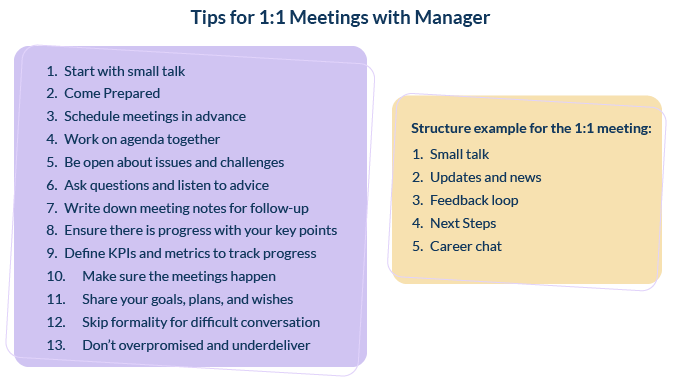
One of the biggest benefits of 1:1 meetings is that they provide a dedicated and focused space for open communication and feedback between managers and employees.
These meetings allow employees to share their thoughts, concerns, and ideas with their manager in a private and supportive setting. This can lead to a stronger trust and connection between the two.
However, it is important to know what NOT TO DO during 1:1 meetings as they can go very wrong in a very short amount of time.
- Don't dominate the conversation: While it's important for managers to provide guidance and feedback during 1:1 meetings, it's equally important to listen actively and give employees space to share their thoughts and ideas.
Avoid dominating the conversation or interrupting the employee, as this can create a sense of frustration or disengagement.
- Don't focus only on negative feedback: While addressing areas where the employee can improve, it's also important to recognize and celebrate their successes and accomplishments.
Avoid focusing solely on negative feedback, creating a demotivating and discouraging atmosphere.
- Don't multitask or get distracted: During a 1:1 meeting, giving the employee your full attention is important, and avoiding multitasking or getting distracted by other tasks or notifications.
This shows the employee that you value their time and input and helps to create a more focused and productive conversation.
- Don't make assumptions or jump to conclusions: It's important to approach 1:1 meetings with an open and curious mindset and avoid making assumptions or jumping to conclusions about the employee's performance or behavior. Instead, ask questions and seek to understand their perspective before providing feedback or guidance.
Now, let us talk about the challenges you might face while implementing listening strategies;
While they are easy to go about, structuring them to cater to a larger workforce might be problematic.
A poorly structured listening strategy can cause an organization to flounder, since listening is the core of any organization.
10. Active Listening:
Active listening is a fundamental aspect of effective employee listening skills.
It goes beyond merely hearing what employees say and involves actively engaging with them to understand their thoughts, concerns, and perspectives.
By listening actively, you demonstrate empathy, validation, and a genuine interest in employees' ideas and experiences. This fosters trust, encourages open communication, and reduces the chances of miscommunication or conflict.
Active listening also allows for deeper understanding of employees' needs and challenges, leading to better problem-solving and continuous improvement.
Ultimately, it contributes to higher employee engagement, satisfaction, and a stronger organizational culture.
However, active listening is not an easy task. There are many barriers of communication, both situational and emergency that might hamper the process of active listening. Some barriers are:
- Distractions: External and internal factors that divert attention away from the speaker's message.
- Personal Bias and Prejudice: Preconceived notions and closed-mindedness that filter or distort information.
- Lack of Empathy: Failing to understand and connect with the speaker's emotions and experiences.
- Information Overload: Overwhelming volume of information that hampers processing and absorption.
- Defensive Listening: Feeling threatened or challenged, leading to a focus on self-defense rather than understanding.
By being aware of these barriers, individuals can actively work to overcome them and enhance their listening skills.
So, how to proceed with active listening;
Implementing active listening involves adopting specific techniques and behaviors.
- Be Fully Present: Give your undivided attention to the speaker and eliminate distractions. Maintain eye contact, face the speaker, and show genuine interest in what they are saying.
- Avoid Interruptions: Allow the speaker to express their thoughts fully without interrupting. Wait for natural pauses to ask clarifying questions or provide input.
- Ask Open-Ended Questions: Encourage the speaker to elaborate by asking open-ended questions that require more than a simple "yes" or "no" answer. This demonstrates your interest and encourages deeper discussion.
- Paraphrase and Reflect: Summarize or rephrase the speaker's key points to ensure understanding and show that you are actively processing their message. Reflect their feelings and emotions to demonstrate empathy.
- Suspend Judgment: Keep an open mind and avoid making premature judgments or assumptions. Remain neutral and avoid imposing your own biases or opinions on the conversation.
Active listening not only improves the quality of communication but also strengthens relationships, promotes a positive work culture, and contributes to the overall success and well-being of individuals and organizations.
Embracing and consistently practicing active listening can yield transformative results in professional interactions and beyond.
Challenges While Implementing Employee Listening Strategy
As per a study on employee listening strategy, the attendees were asked if they feel they have sufficient insights into the needs of their employees during the employee lifecycle to build a future-proof organization. This is what they said:
50% – Yes, I have a bit of insight
30% – I’m not sure
20% – No, none at all
Implementing an effective employee listening strategy can be challenging for organizations, especially if they are not well-prepared or lack the necessary resources or support.
Here are some common challenges that organizations may face while implementing an employee listening strategy:
1. Resistance to change
Employees and managers may resist new initiatives or processes, especially if they feel they are being imposed from the top down without their input or participation. To overcome this challenge, organizations should involve employees in the design and implementation of the listening strategy and communicate the benefits of the initiative.
2. Lack of trust
Employees may be hesitant to share their honest feedback or opinions if they do not trust that their responses will be kept confidential or that their feedback will be acted upon. To address this challenge, organizations should create a culture of trust and transparency and ensure that feedback is shared openly and respectfully.
3. Poor communication:
Organizations may struggle to effectively communicate the purpose and scope of the listening strategy, leading to confusion or skepticism among employees. To address this challenge, organizations should provide clear and consistent messaging about the initiative, including its goals, timelines, and expected outcomes.
4. Limited resources:
Implementing an effective employee listening strategy requires dedicated resources, including time, budget, and staff. Organizations may struggle to allocate these resources, especially if they are already stretched thin. To address this challenge, organizations should prioritize the listening strategy and allocate the necessary resources to ensure its success.
5. Overcoming biases:
Organizations may struggle to overcome biases or assumptions impacting their ability to listen to and act on employee feedback. To address this challenge, organizations should be aware of their biases and actively seek to address them through training, diversity and inclusion initiatives, and ongoing reflection and evaluation.
Tools for Implementing Employee Listening Strategy
Employee listening strategy comprises majorly of three tools- Pulse Surveys, Engagement Surveys, and Lifecycle Surveys. Let’s quickly take a peek at what each of these is;
1. Pulse Surveys:
Pulse surveys can track changes in employee sentiment over time. They are often used in conjunction with annual engagement surveys to provide real-time feedback
2. Engagement Surveys:
The engagement surveys measures engagement and satisfaction levels of the employees. It can be conducted once a year with standardized questions and objective based questions.
3. Lifecycle Surveys:
A life time survey is used to gather feedback at specific milestones in an employee's, tenure (e.g. onboarding, exit). It also provide insights into how to improve the employee experience at critical stages of his career in an organization.
If you're looking for a powerful employee engagement survey platform, Vantage Pulse might be just what you need. This platform is designed to help HR leaders gather and analyze employee feedback to improve workplace culture and productivity.
With a user-friendly interface, customizable survey templates, and advanced analytics features, Vantage Pulse makes it easy to create, distribute, and analyze employee surveys.
What does it offer?
The platform offers various features to help organizations understand employee feedback better, including sentiment analysis, heat maps, and comparative reports.
Using Vantage Pulse, you can quickly identify trends, track progress, and take data-driven actions to improve employee engagement and retention.
We pride ourselves on providing exceptional customer service and support to ensure that our clients achieve their goals.
Whether you're a small business or a large enterprise, Vantage Pulse can help you transform your workplace culture and increase employee satisfaction.
Join the many companies who have chosen Vantage Pulse to build a positive, engaged workforce.
4. The 5-Point Likert Scale.
The 5-Point Likert Scale is a rating scale used in survey research to measure people's attitudes, opinions, or perceptions on a particular topic or issue. It typically consists of a statement or question followed by a set of six response options ranging from 1-5 or 1-10, which corresponds to "strongly agree" and "strongly disagree.
The 5-point Likert scale is a commonly used variation of the Likert scale, although scales with more or fewer response options may also be used depending on the research question and context.
5. Sentiment Analysis Tool
An employee sentiment analysis tool is a software or application that automates the process of collecting and analyzing employee sentiment data.
So how do these tools help?
- The sentiment analysis tool use natural language processing (NLP) and machine learning algorithms to categorize and analyze text data.
- It identifies themes, emotions, and opinions expressed by employees.
- It also analyzes and measures the attitudes, opinions, and emotions of employees towards their work, colleagues, and organization.
- It involves gathering and analyzing data from various sources, such as employee feedback surveys, annual surveys, social media, emails, and chat logs, to understand the overall sentiment of employees.
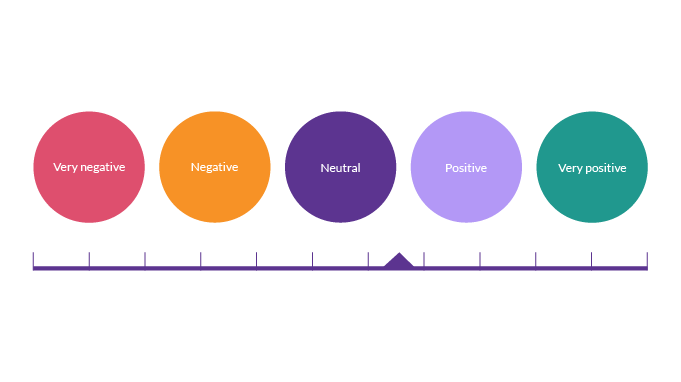
To measure employee sentiment, these tools use a range of metrics, such as:
- Positive and negative sentiment: The tool assigns a score to each piece of text, indicating the degree of positivity or negativity expressed by employees.
- Emotion analysis: The tool identifies the emotions expressed by employees, such as happiness, frustration, anger, or sadness.
- Topic analysis: The tool categorizes the text data into different topics, such as work culture, leadership, communication, and job satisfaction.
- Sentiment trends: The tool tracks changes in sentiment over time, identifying any improvements or declines in employee sentiment.
By analyzing the response rate, employee sentiment analysis tools can help business leaders gain insights into their employees' perceptions, identify areas for improvement, and take action to enhance employee engagement and satisfaction.
Leading Example of Successful Employee Listening Strategies
**UBER: Why Uber Adopted the continuous listening method?
Uber's decision to switch to a continuous listening model was driven by a desire to create a more responsive and inclusive workplace culture.
In the past, Uber conducted traditional annual employee engagement surveys, which provided valuable insights into employee sentiment. However, this model had some limitations, as it didn't allow for real-time feedback or quick action to address emerging issues.
Tracking feedback throughout the year helps us reduce recency bias. Due to its ongoing nature, timely feedback also ensures that there are no surprises in terms of how the teams are performing.
– Divya Garg, Head of HR, Uber India.
By adopting a continuous listening model, Uber could;
- gather feedback from employees more frequently, enabling them to identify and address issues as they arose.
- track employee engagement and satisfaction over time and gain a more comprehensive understanding of employee sentiment.
- address workplace culture issues following a series of controversies and scandals.
Overall, Uber's adoption of a continuous listening model allowed them to be more responsive to employee feedback and better understand the needs of their workforce.
By listening to its employees and acting on concerns in a timely manner, Uber aimed to create a more positive and inclusive work environment.
MICROSOFT
Each year, companies allocate more than $300 billion toward enhancing the employee experience. Given this substantial investment, organizations must prioritize the most important needs of their employees to ensure that their resources are wisely allocated. Nonetheless, it is essential to ensure that the investments made are appropriate for improving the overall employee experience.
Employee listening has played a significant role in transforming Microsoft's culture and operations in recent years.
In the past, the company was known for its aggressive and competitive approach to business, often resulting in internal conflicts and a lack of collaboration.
So, the tech giant Microsoft recognized that they needed to create a more inclusive and empathetic workplace culture to attract and retain top talent.
So what did Microsoft do?
- To achieve this goal, Microsoft implemented a series of initiatives that focused on employee feedback and engagement.
For example, they priortized employee listening and various practices around it, allowing employees to share their thoughts and ideas with the company's leadership anonymously.
- Microsoft also created a "One Microsoft" culture that emphasized cross-functional teamwork, shared goals, and a commitment to diversity and inclusion.
This culture aimed to break down internal barriers and promote a more cohesive and integrated approach to product development, customer experience, and employee listening strategies.
As a result of these efforts, Microsoft's employee satisfaction and engagement levels have pushed through the roof.
- The company has also become a leader in areas such as remote work and flexible scheduling, which have become increasingly important to employees in the wake of the COVID-19 pandemic.
As a result of this initiative, Microsoft carved a new way of success and made the entire business user-centric. This helped form a more cohesive, efficient, and satisfied workforce.
Conclusion
So far, conventional methods like annual employee surveys and online pulse surveys have been utilized to gauge employee perspectives.
However, new and more indirect methods of collecting employee feedback have emerged over the last few years.
These methods include using sentiment and tension analysis tools to monitor internal social media networks, email systems, and online communities, as well as tracking external data sources such as job sites like Glassdoor or Indeed.
Although traditional methods have their limitations, if used with modern techniques, they will remain effective at providing companies with insight into their employees' views and needs.
Frequently Asked Questions FAQs
1. Why is employee listening important?
Employee listening is important because it helps organizations understand the needs, expectations, and experiences of their employees. It promotes a culture of openness, trust, and engagement, leading to higher employee satisfaction and productivity. It also enables organizations to identify and address potential issues, improve communication, and make informed decisions that positively impact their workforce.
2. How can organizations ensure employee anonymity when listening to feedback?
To ensure employee anonymity, organizations can use anonymous surveys or feedback platforms that do not collect personally identifiable information. They can also establish clear policies and procedures to protect employees' identities when sharing feedback. It's important to communicate to employees that their feedback will be treated confidentially and that there will be no negative consequences for expressing their opinions.
3. How often should organizations engage in employee listening initiatives?
The frequency of employee listening initiatives can vary depending on the organization's size, industry, and specific needs. However, it's generally beneficial to have regular and ongoing opportunities for employee feedback. This could include periodic surveys, scheduled focus groups, or an open-door policy where employees can share their thoughts anytime. The key is to establish a culture of continuous listening and improvement.
4. How should organizations communicate the outcomes of employee listening initiatives?
Organizations should communicate the outcomes of employee listening initiatives transparently and in a timely manner. They can share summary reports or presentations highlighting key findings, themes, and actions taken based on the feedback received. It's essential to demonstrate to employees that their voices are heard and that their feedback leads to tangible outcomes and improvements.
5. How can organizations use technology to facilitate employee listening?
Technology can play a crucial role in facilitating employee listening. Organizations can leverage online survey platforms, feedback management software, internal communication tools, and collaboration platforms to collect and analyze employee feedback efficiently.
6. How can organizations demonstrate the value of employee listening to their employees?
Organizations can demonstrate the value of employee listening by actively acknowledging and acting upon the feedback they receive. When employees see that their suggestions are taken seriously and result in positive changes or improvements, it reinforces the importance and impact of employee listening. Communicating success stories, sharing examples of how employee feedback.











